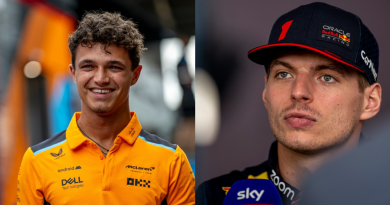Ferrari’s early struggles in the 2025 Formula 1 season have raised alarm bells, with their underwhelming performance in Australia exposing a fundamental weakness. Now, ahead of the Chinese Grand Prix, the team has identified a “critical” issue in the data from Lewis Hamilton and Charles Leclerc—one that could be pivotal in turning around their fortunes.
The opening race in Melbourne was a brutal reality check for Ferrari. After qualifying locked out the fourth row, they managed to salvage just five points, with Leclerc finishing in P7 and Hamilton struggling to make an impact in P8. The result left them languishing in seventh place in the constructors’ standings—below even Sauber, last year’s backmarkers.
McLaren’s Andrea Stella and Mercedes’ Toto Wolff suggested that Ferrari’s true pace was hidden in Australia, but the numbers don’t lie: they were nearly seven-tenths off the pace in qualifying, a deficit that raises serious concerns.
Their race strategy didn’t help matters either. When rain hit late in the race, Ferrari hesitated on pit stops, costing both drivers valuable positions and undoing any progress made earlier in the race.
Medium-Speed Struggles: The Core of Ferrari’s Woes
Post-race analysis revealed a striking inconsistency in Ferrari’s performance. Data suggests that the SF-25 gained 0.7 seconds in high-speed sections compared to its predecessor, with an impressive 12km/h improvement. But in medium-speed corners—the bread and butter of modern F1 circuits—they have taken a significant step backward, losing up to four-tenths per lap.
This is particularly concerning for Hamilton, who thrives on a stable and predictable car. Ferrari’s decline in this area means the SF-25 might actually be worse in overall cornering performance than last year’s SF-24, making it even harder to extract consistent lap times.
The contrast is stark when compared to McLaren’s surge. Lando Norris’ pole time in Australia was nearly nine-tenths quicker than last year’s benchmark set by Max Verstappen. While other teams have made significant gains, Ferrari appears to be stuck in reverse.
With balance adjustments potentially offering a solution, Ferrari faces a race against time. The longer it takes to correct the issue, the further they risk falling behind in the championship battle.
Hamilton’s Growing Frustration: Communication Issues with Ferrari
Beyond the car’s performance, another growing concern for Ferrari is Hamilton’s working relationship with his race engineer, Riccardo Adami. Tense radio exchanges between the two in Melbourne caught the attention of commentators, with Martin Brundle questioning why Hamilton seemed so agitated.
Veteran F1 analyst Peter Windsor was surprised that these communication issues weren’t ironed out during pre-season testing in Bahrain. Hamilton has made it clear that he only wants information when he asks for it, a working style that served him well with Mercedes engineer Peter Bonnington—the most successful driver-engineer duo in F1 history.
While it’s too early to draw conclusions about Adami’s capabilities, the early signs suggest that Ferrari must refine their communication if they are to get the best out of Hamilton. Adami previously worked with Sebastian Vettel, but the dynamics of that partnership were different, and adjusting to Hamilton’s precise demands will take time.
Ferrari’s Next Steps: Can They Recover in China?
As Ferrari heads to Shanghai, their immediate focus will be on addressing their medium-speed cornering deficit and improving their pit stop decision-making. The Chinese Grand Prix will serve as a crucial test of their ability to react quickly and implement effective changes.
With Red Bull, McLaren, and even Mercedes appearing to have taken steps forward, Ferrari cannot afford to let their early struggles snowball into a season-long weakness. For Hamilton, the priority will be ensuring his voice is heard within the team—both in terms of car development and race-day communication.
The pressure is mounting, and Ferrari has little room for error. The coming races will reveal whether they can turn their “critical” issue into a breakthrough—or if their 2025 campaign is already slipping away.




